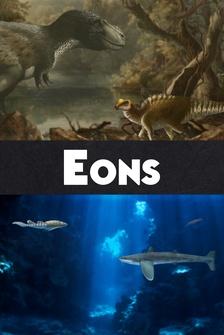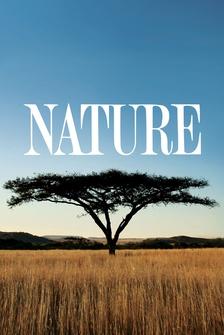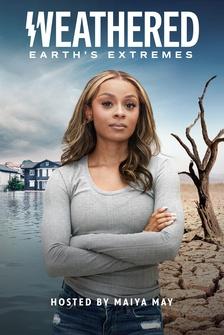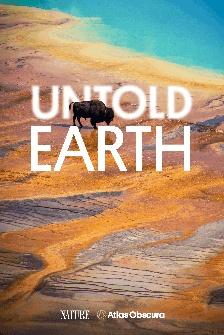(ducks quack) (calm synth music) (woman speaks in foreign language) (water dribbles) - Hello.
- Hello.
- Hi.
- Hi.
- What's your name?
- Aghash.
- Aghash.
You're saying that the next generation of kids in Bangladesh may live their entire lives on floating structures.
- This is speaking to the future of not just Bangladesh, but of the world.
(calm music) - [Alizé] Right now, our environment is facing rapid and dramatic change.
From global warming to rising sea levels, to new invasive species.
As a global community, we know what we need to do to address these problems at their source.
But we will also have to adapt.
In fact, for millions of people around the world, adaptation is already a part of everyday life.
My name is Alizé Carrere.
I'm a scientist and National Geographic explorer, living in Miami, Florida, a city where adaptation to climate change is right at our doorstep.
I study how human lives are impacted by environmental change.
And in my work, I envisioned the kind of futures we want to live in.
My research has taken me around the world, where I've learned from communities who have had to experiment with new ways to survive.
From the reeves of the South Pacific, to the rivers of the American Midwest, in this series, we'll discover some of the innovative and surprising ways people are learning to adapt.
These are their stories.
(adventure music) (upbeat music) Bangladesh, hot, humid, and vibrant.
Situated at the heart of one of the largest river deltas in the world.
Life here is profoundly shaped by water.
Sea-level rise in the South.
Glacier melts in the North, and a changing monsoon season make for a true water world.
Bangladesh is also the most density populated country on our planet.
163 million people, which is more than the entire population of Russia, living in an area the size of Illinois.
These realities make Bangladesh exceptionally vulnerable to climate change.
4 million people have already been forced from their homes.
(calm music) (rain drips) Several years ago, I began to research how people respond to dramatic changes in their environment.
I was intrigued by the term, adaptation, and wanted to learn more about what it looked like on the ground.
Who were the people doing it?
And what does the rest of the world need to learn from them?
I'm continually inspired by the resilience of the human population in the face of unimaginable hardship.
Our ability to innovate in the face of disaster is why we're still here today.
We are highly adaptable species.
I'm here in Bangladesh, alongside Tania Rashid, an international reporter back in her ancestral lands.
We've been visiting villages along the Padma and Meghna Rivers where adaptation is a way of life.
Jobs like farming, rope making, and brick production, have to regularly respond to the challenges of living with shifting lands and waters.
- We've had cyclones, we've had severe flooding, but through it all, people find a way to survive.
(women speaks foreign language) - When it's monsoon season, the water goes up to 10 feet deep.
(calm music) - Locals here are faced with a difficult choice for survival.
They are forced to flee their homes and become climate refugees, or they find ways to adapt.
(calm synth music) The people here have had to become really resilient and come up with creative solutions to deal with some of these incredible challenges, which most people in this day and age don't have answers too.
(ducks quack) For Bangladesh, this involves a future that floats and it starts with floating gardens.
- We're headed towards a fresh raft right now, that's been freshly made with all this water hyacinth.
(people speak in foreign language) What I'm learning is that this right here is made of bamboo, cow dung, and this plant, kachuripana.
- [Alizé] Water hyacinth.
- Yeah, it's found all over the land and what they did was something very innovative.
They took the kachuripana and applied it here which makes it sturdy.
- [Alizé] What Tania's explaining is how the floating rafts are made.
Farmers start with water hyacinth, a tightly knit water weed that floats.
Piling layers of it together to be crushed down into a compact bed.
Next, they lay down long bamboo rods to help with form and structure.
Then another several layers of water hyacinth will be added to bind everything together.
Finally, a thin layer of cow manure or fertilizer will be placed on top, upon which crops are then planted.
The entire raft-making process takes about 15 days.
(calm music) (people speak in foreign language) - Ah-ha (laughs) - We're headed to the floating gardens right now where we're gonna watch other women harvest their food in circumstances like this.
(laughs) Oh, no.
(laughs) (water splashes) (man speaks in foreign language) Okay.
(everyone laughs) (people speak in foreign language) - What appears to be soil, is just that natural degradation process.
- It rocks on its own.
(people speak in foreign language) - They have squash.
They have cucumbers.
They have okra.
They basically have a farm.
(Alizé laughs) - Which is pretty incredible because we're not even on soil, we're on a water weed (laughs) basically.
- [Tania] We're literally standing on water weed right now.
- [Alizé] Yeah.
(water weed crunches) (both laugh) (calm music) - [Alizé] Traditional floating farms work well in the Southern parts of Bangladesh where water levels rise during monsoon season.
In Northern parts of Bangladesh, we find wider rivers, higher floods and stronger currents.
For this area, floating gardens have been further adapted using sturdier materials.
(calm music) - Once the floods hit their crops get destroyed.
And that's why these preventative measures have been taken so that the locals can stay afloat, have their eggs, have their fish and their vegetables to eat and survive.
(water splashes) - [Alizé] In the Northwestern region near Padma, we find farmers learning how to build multilayer farm units that float, thanks to the work of a local NGO called Shidhulai Swanirvar Sangthsa.
Here, they're built using bamboo frames supported by recycled plastic jugs, which are filled with soil to grow crops.
- That's another squash.
(Tania speaks in foreign language) So they have tilapia fish in this structure of the water.
- On this more advanced version, you'll also find fish pens in between the frames where tilapia are being raised.
Also attached is a floating duck coop giving local farmers another important protein, eggs.
- [Tania] We see ducks, we see fish, and we see agriculture all on one unit.
It's a whole meal over here.
(calm music) - [Alizé] Muhammad Rezwana, the same Bangladeshi architect behind the design of the advanced floating farm, took the idea even further and is now working towards creating his country's first-ever floating community, including floating schools.
(children speak in foreign language) - They're asking how are you doing?
Are you doing well?
- I'm doing great, thank you.
How's everybody today?
(Tania speaks in foreign language) - [Tania] They're just used to being on the boat school.
They've never seen anything beyond this in their life.
- [Alizé] So this is something that for them is rather normal.
- Yes.
- They've always been going to school on these boats.
- Yeah.
(Children speak in foreign language) - Okay, the kid, he says, "The boat school is all I know."
And he's saying even when there's intense flooding, he makes a way to school.
- So it's basically like the boat is their school bus and their classroom at the same time.
(children and teacher speak in foreign language) Imagine being picked up every morning for school, but the road is a river.
The bus stop is a dock and your classroom is a boat.
In the morning, you wait alongside the river, hop aboard when the boat arrives, have class and then get dropped off again when school is over.
(calm music) Another innovative feature of these boat schools, are the solar panels on the roof, capturing sunlight to power lights and computers inside.
(conversation in foreign language) - [Tania] This is speaking to the future of, not just Bangladesh, but of the world.
- [Alizé] Some projections show that up to 20% of the country could be submerged underwater in the coming decades.
That's an enormous number of people that will become climate refugees.
What's incredible about these floating structures, is that they can help keep communities where they've been for hundreds of years, creating a floating village.
- A floating city.
(calm music) - [Alizé] That may sound futuristic, but innovators across the world are already working on it.
An architect in Barcelona has designed a prototype for a smart floating farm.
A multi-level structure inspired by Asia's many grid-shaped floating fish farms, similar to the ones we visited in Bangladesh.
On the top level are solar panels powering most of the floating farm.
Below on the middle level are crops growing with the help of desalinated water and natural light.
And on the bottom level is a fish farm.
The structure is made of mass timber, supporting the use of sustainable materials that have a lower carbon footprint, and that can be prefabricated.
If the prototype proved successful, the vision for the smart floating farm could be scaled for coastal areas and growing cities, supporting more local food production without the need for more farmland.
(calm music) Recognizing what's happening at the local level is a critical place to start for addressing the challenges of the future.
Climate change is global, but adaptation is often local.
Solutions will be unique to different places, people, and societies.
But whether it's a Bangladeshi farmer using the materials in her backyard or a high tech platform to provide food for the future, we unite over a common ability to innovate in the face of change.
That's what's striking about the topic of adaptation.
It's challenging, and it's urgent, but ultimately, it's about what we as a species do well.
We innovate, we create, we adapt.
(calm music) (calm music continues) (slogan music)












